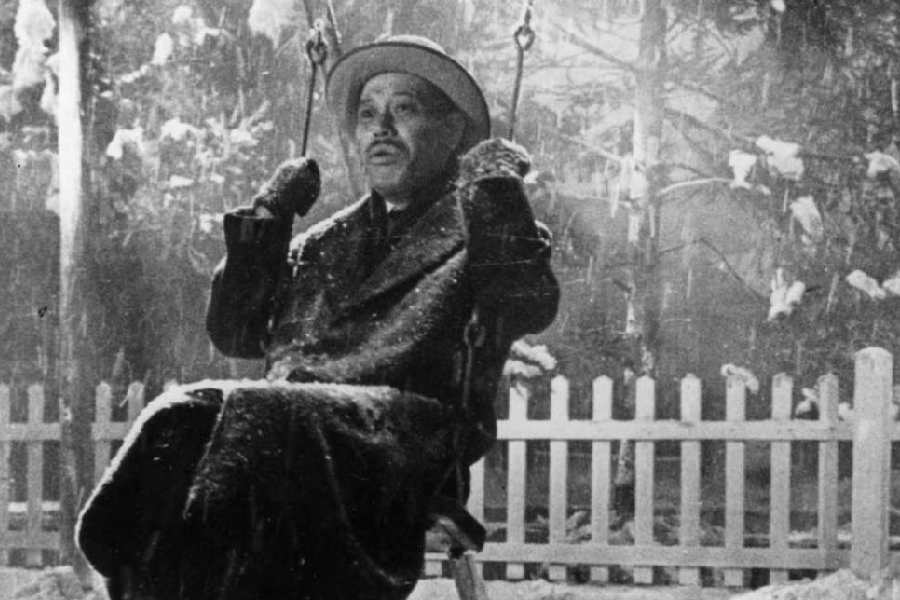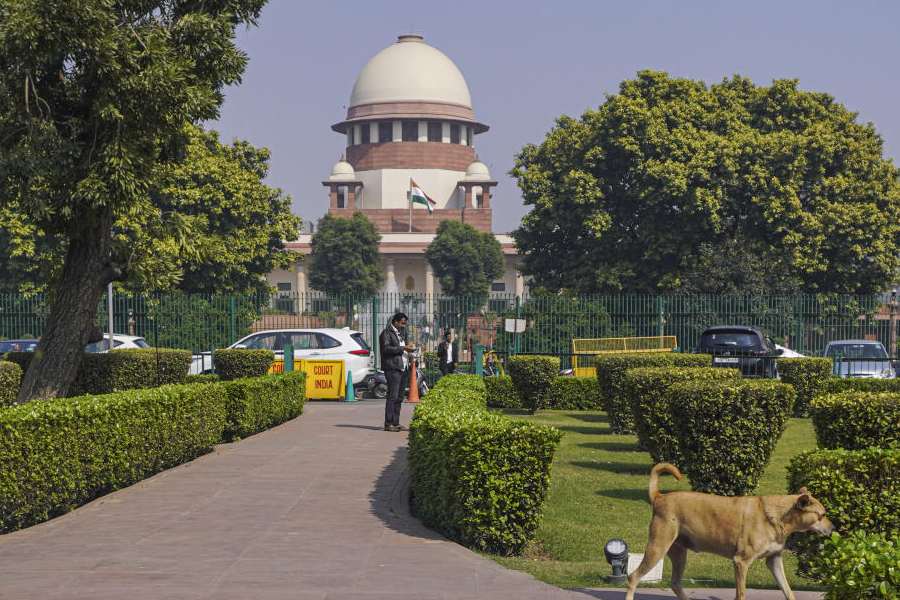A film that stays with us does so for many reasons and in many ways. The image is paramount in cinema, and the dragonflies skipping over a pond in the rain as Durga shelters under a tree in Pather Panchali, the startling appearance of the bahurupi in an abandoned airfield in Subarnarekha, or the train tracks in I Was Born, But… will return to the mind repeatedly in an idle moment. Sometimes, though rarely, the luminosity of the visual gives way to story; storytelling is not integral to a great film, just as it isn’t to the best writing, but occasionally a writer or filmmaker will capture a human predicament, and come to mind for that reason.
In the last few years, as a plot of land facing our flat with a beautiful yet simple one-storey building with an extensive garden in front of it was first sold, and then the Bauhaus structure, once owned by the first Indian principal of the Government College of Art and Craft, Dwarkanath Ganguli, was destroyed, a film came back to mind again and again. For some reason, though it is called Ikiru (to Live), I remembered it as The Garden. Shot in black and white in the 1950s, it told the story of a Japanese bureaucrat buried in files all his life deciding to embark on one good thing before he died, wresting a small plot of land from developers and answering a community’s need by facilitating on that plot, instead, a small park with a swing on which children would play. Was it possible that, as I waited with dread for the new owners to develop the land I looked out on, such a person, by some miracle, would be incarnated in the KMC offices, similarly surrounded by dusty computers, to pursue a vision of turning that space into a park with green trees? As we waited, some god above seemed to have at least partially heard us — according to some accounts, the developers who had jointly bought the land had quarrelled, and the plot, subsequently, lay vacant for some more years. This was a time in which the property continued to breathe through its trees and fallow land, the rubble of the destroyed building giving way, bizarrely, to a vegetable patch on which a tin shed came up as a sort of greenhouse. The south wind blew through an area that had resembled an abandoned overgrown zone, now metamorphosed for agricultural production. Nevertheless, it was a reprieve.
Other fantasies came into play in this interregnum. Would the Birlas perhaps buy the land and build on it instead a decent-sized museum of the modern art of Bengal to match the science museum located nearby in the house of Satyendranath Tagore? Would it have all the paintings of Rabindranath, Abanindranath, Gaganendranath, and the Bengal School that no visitor to the city could see because there was no museum to house it? This was, after all, property once owned by another Tagore, Swarnakumari Debi, whose gracious mansion, with the name of her son, Sir Josna Ghoshal, was still extant, the name spelt in this odd way on the marble plaque of the gate adjacent to the empty land. They must have once used the land — for a pond, for tennis courts? — and sold it in the early twentieth century to a family member: Dwarakanath Ganguli was related by marriage. Rabindranath writes in Chhinnapatrabali of visiting his older sister’s house on a rainy evening in a carriage, and of singing to the assembly of friends and family gathered there.
Meanwhile, a proposal to build a 27-storey structure on the plot made the rounds — each floor would house only one flat. How would the narrow lane accommodate the multiple cars each flat-owner would no doubt possess or the atmosphere cope with the multiple air-conditioners emitting hot air? It is, after all, a lane in which almost none of the original low houses has survived. No doubt the authorities would consider all this, or, equally undoubtedly, would not.
Two years ago, the WhatsApp group of our building informed us that the property had been sold to a single owner of a cement company. There was also some intimation that the family would be building a bungalow on the land. There was relief, largely unspoken and yet real, that finally a wealthy property owner had decided to build what would no doubt turn out to be a mansion rather than a simple bungalow, but would still be surrounded by the greatest wealth of all, trees and grass in a city choking on its own air. No matter that the imagined and longed-for bureaucrat had not materialised, or that the land would not benefit the community’s children or art lovers — someone had had the sense to match the two buildings on either side and build a residential house rather than an apartment block. A few months later, work started.
A horrifying period of construction-related noise commenced and still continues. This was not the only old building in the lane that had been destroyed at this time — another century-old private property had been brought down on the other side of the lane and a multi-storey building was being built on that site as well. The whine of drilling machinery, the groaning of mammoth trucks carting away soil through night-time into daybreak, the unrelenting monstrous banging of something we could not see as every thud enveloped the lane in dust, making it difficult to breathe: this was, and to an extent is, our reality. What was the particular banging continuing into the late hours of the night? The builders on both sides were contacted by concerned flat owners — it was something called ‘piling’, and the property opposite was creating the most noise because they were creating an extra-deep basement for their building.
This is when it was realised that what the builders were calling a ‘bungalow’ was actually a G+9 structure — a tall building with hardly any room for grass and air. Why would one family need so many flats to live in was not our question to ask — after all, nobody had asked the Ambanis that question, and they have no doubt become a model of sorts in this domain. There is nothing further to be done. People living in flats themselves — constructed a long time ago by the West Bengal government in a property that was once said to have housed Ashutosh Chaudhuri’s stables (the main road is nowadays called Ashutosh Chaudhuri Avenue on Google Maps) — should not mind if other people build more flats opposite their building. No matter that the south wind will cease to blow for them.
Rosinka Chaudhuri is Director and Professor of Cultural Studies, Centre for Studies in Social Sciences, Calcutta










